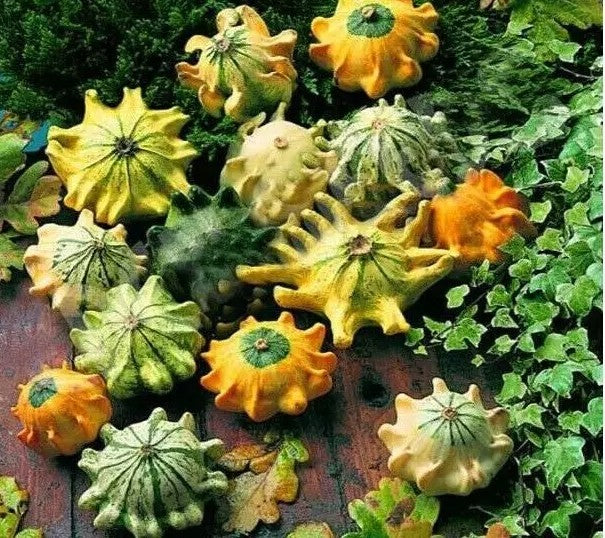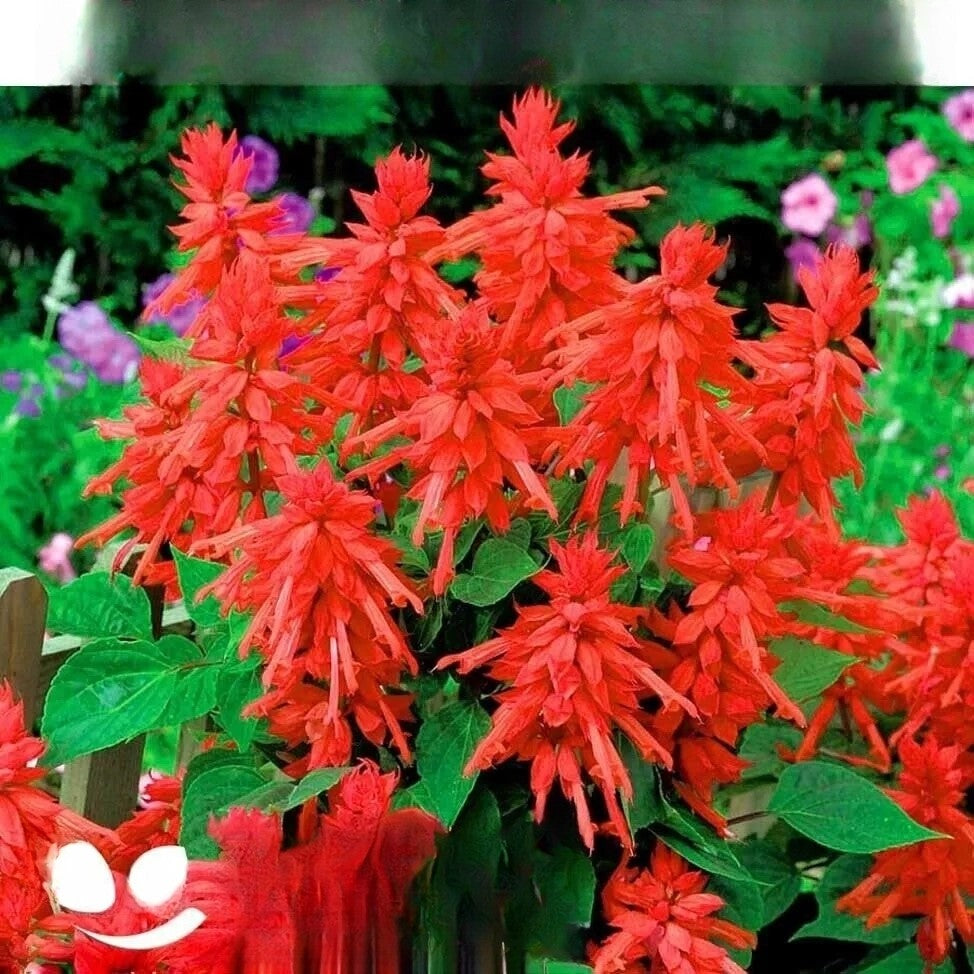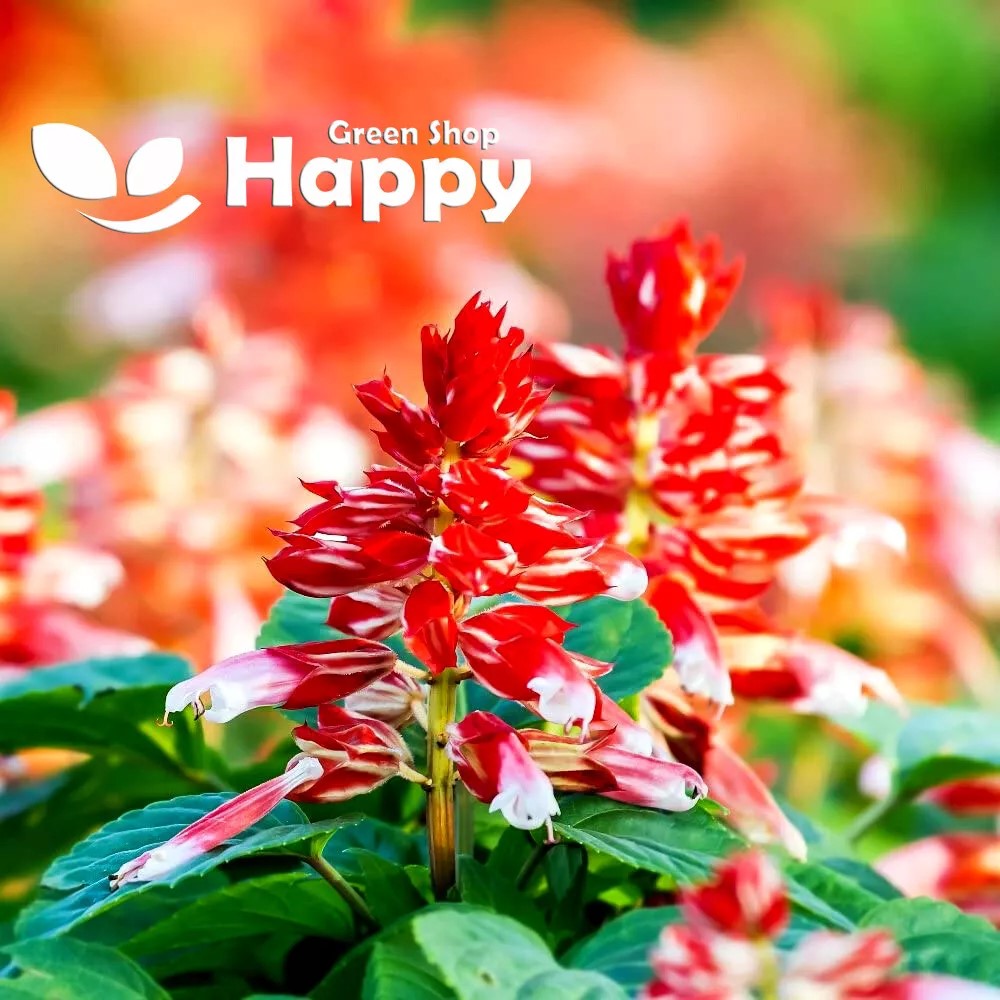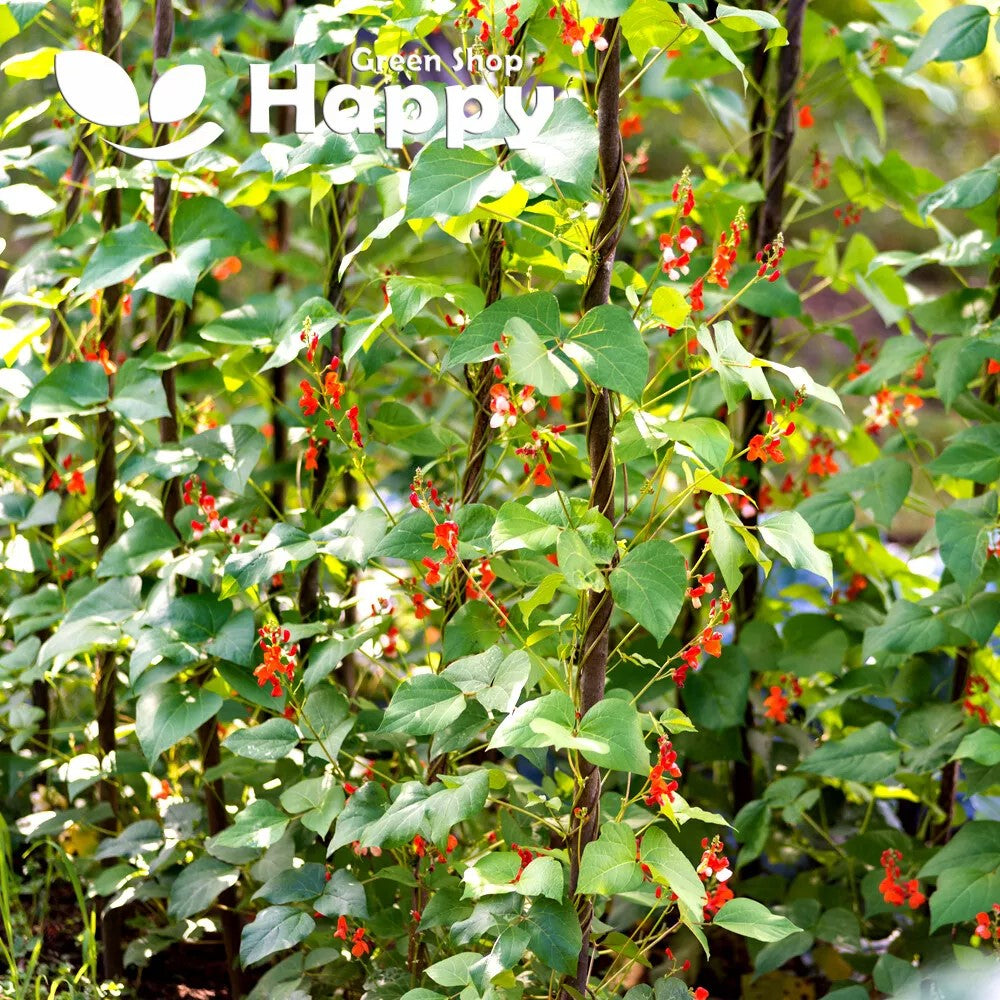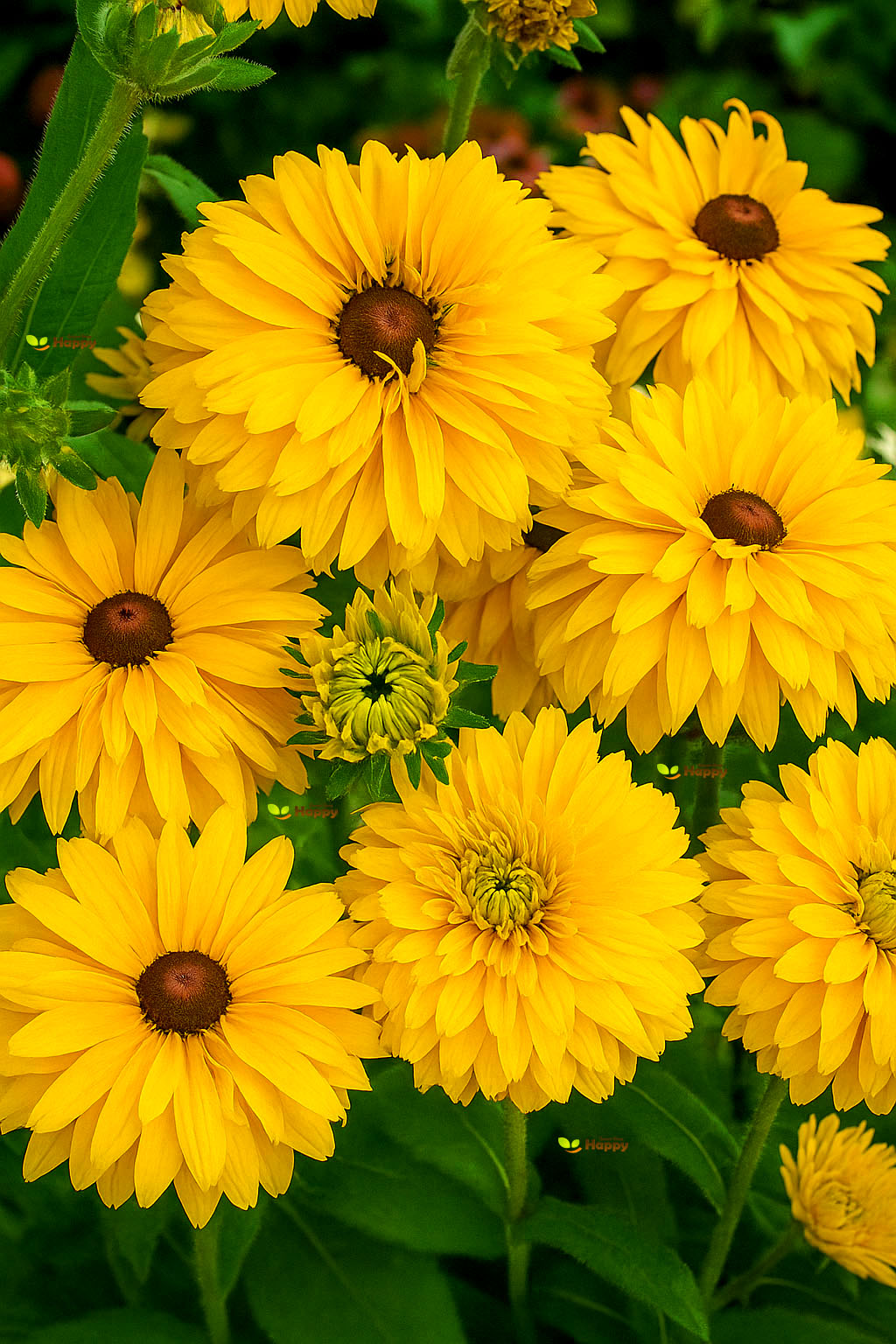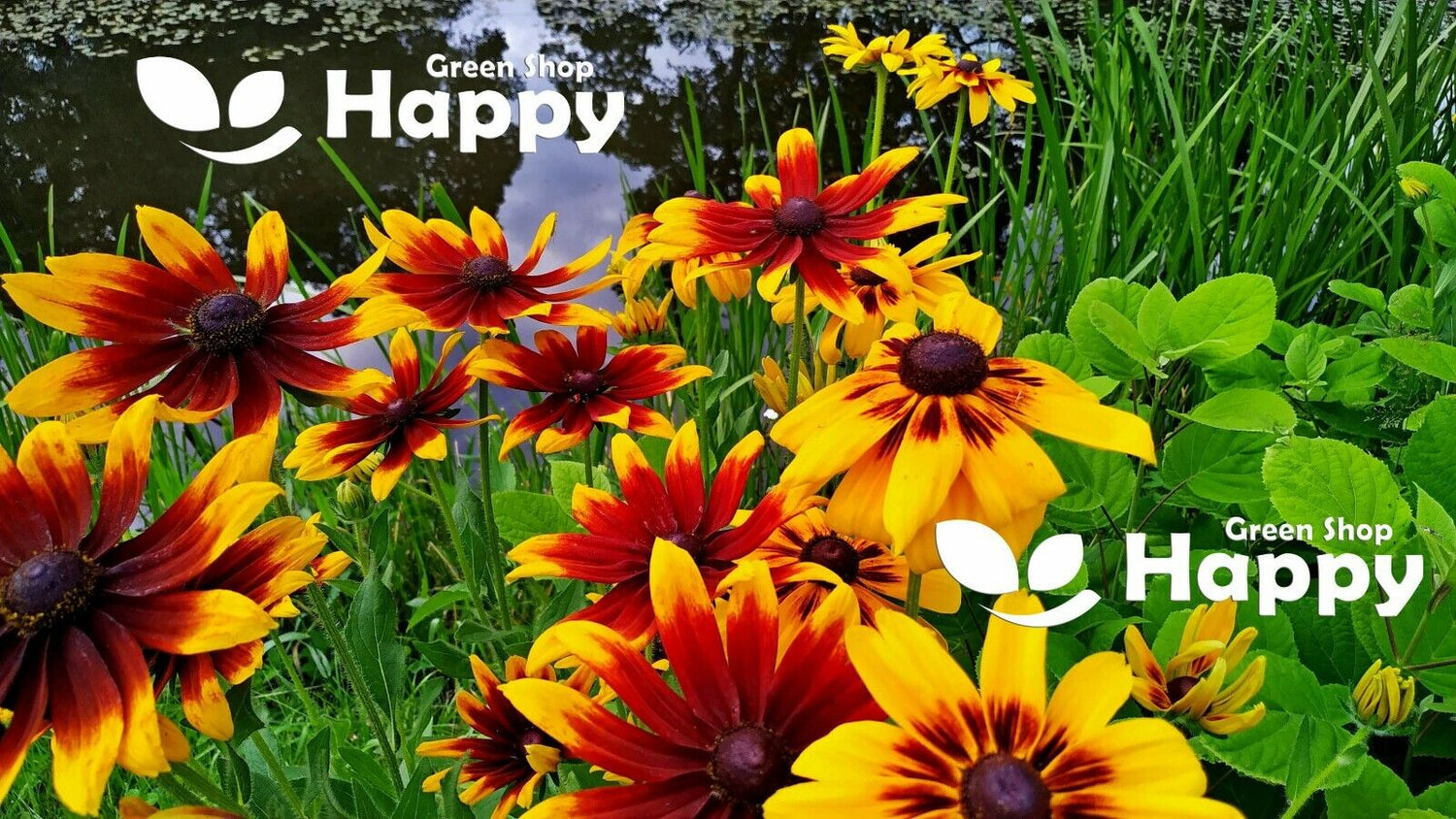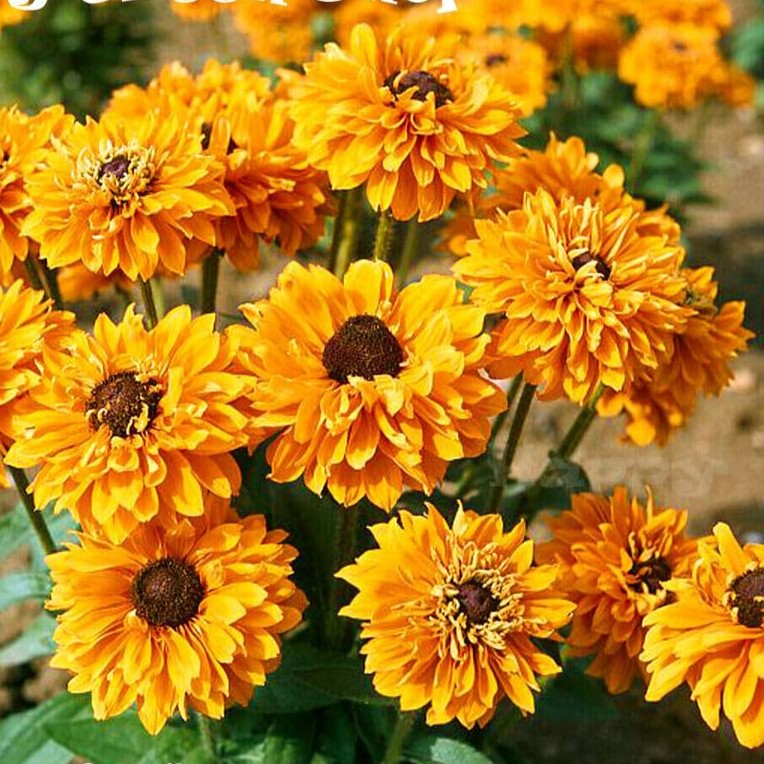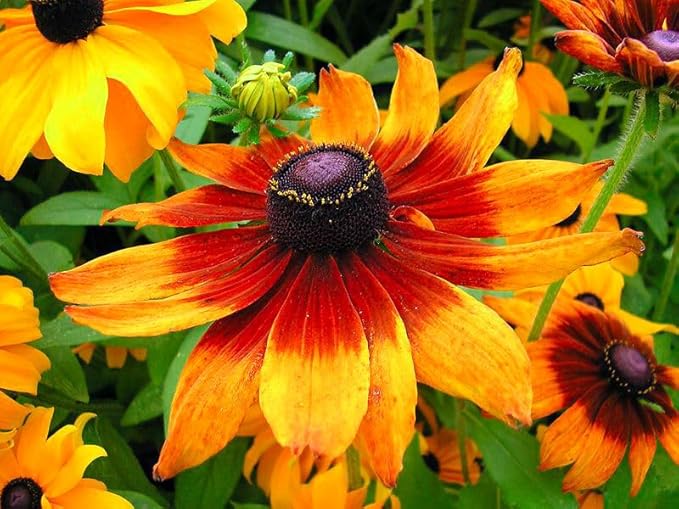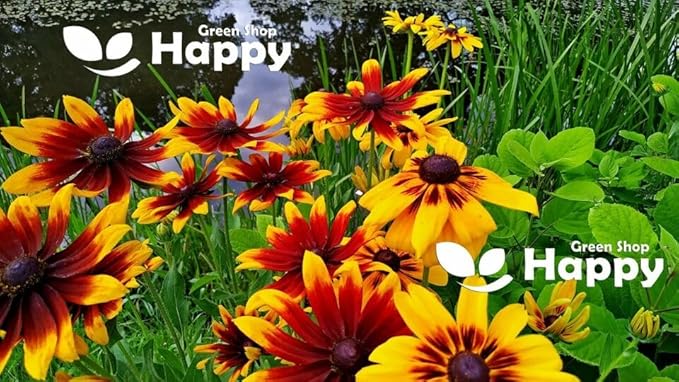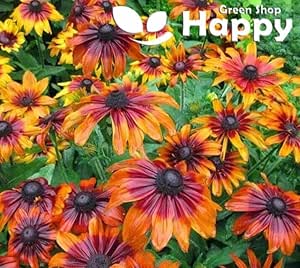Sort by:
435 products
435 products
Sage ‘Tango Red’ – Seeds (Salvia splendens)
Sage ‘Tango Red’ (Salvia splendens) is a striking annual that produces dense spikes of vivid scarlet-red flowers from summer until the first frost. With its compact, bushy habit, it’s perfect for borders, bedding schemes, containers, and mass plantings where vibrant, long-lasting color is desired. Easy to grow and low-maintenance, this variety also attracts bees, butterflies, and hummingbirds, making it both ornamental and wildlife-friendly.
Why Grow "Tango Red"
-
Bright scarlet-red flower spikes all summer long
-
Compact and bushy habit for neat displays
-
Attracts bees, butterflies, and hummingbirds
-
Long-flowering, easy-to-grow annual
Key Features
-
Type: Annual (Salvia splendens)
-
Height: 25–40 cm
-
Flowering: Summer to first frost
-
Position: Full sun
-
Uses: Borders, bedding, mass plantings, containers, pollinator gardens
Ideal For
-
Adding vibrant red color to borders and beds
-
Bedding displays and formal garden designs
-
Patio and balcony containers
-
Pollinator-friendly planting
Sowing & Growing
-
Sow indoors: February–April in trays or pots
-
Germination: 14–21 days at 18–22°C
-
Transplant outdoors after last frost
-
Space seedlings: 20–25 cm apart
-
Prefers fertile, well-drained soil in full sun
Sage Red-Orange – Seeds (Salvia splendens)
Sage Red-Orange (Salvia splendens) is a vibrant annual producing striking red-orange spikes of tubular flowers. Blooming from summer to autumn, this heat-tolerant plant adds bold color and vertical interest to borders, containers, and cottage-style gardens. Easy to grow and low-maintenance, it attracts hummingbirds, bees, and butterflies, making it perfect for pollinator-friendly planting and long-lasting summer displays.
Why Grow "Red-Orange Sage"
-
Bold red-orange flower spikes
-
Long flowering season from summer to autumn
-
Easy-to-grow, low-maintenance annual
-
Pollinator-friendly and visually striking
Key Features
-
Type: Annual (Salvia splendens)
-
Height: 40–60 cm
-
Flowering: Summer to autumn
-
Position: Full sun
-
Uses: Borders, containers, cottage gardens, pollinator-friendly beds
Ideal For
-
Adding vertical color to borders and mixed beds
-
Cottage and container gardens
-
Pollinator-friendly garden schemes
-
Summer and autumn garden displays
Sowing & Growing
-
Sow indoors: February–April in trays or pots
-
Sow outdoors: April–May after frost
-
Germination: 10–14 days at 18–22°C
-
Thin seedlings 25–30 cm apart
-
Prefers well-drained soil in full sun
-
Water moderately until established
Runner Beans Mixed – Seeds (Phaseolus coccineus)
Runner Beans Mixed (Phaseolus coccineus) is a vigorous climbing annual producing abundant edible pods and vibrant flowers in shades of red, white, and pink. Blooming and producing pods from summer to autumn, this versatile plant is ideal for trellises, fences, and obelisks. Easy to grow and highly productive, it provides both a colorful display and a delicious harvest for your garden.
Why Grow "Runner Beans Mixed"
-
Produces edible pods and colorful flowers
-
Long flowering and harvesting season from summer to autumn
-
Vigorous climber suitable for trellises and fences
-
Combines ornamental beauty with edible value
Key Features
-
Type: Annual climber (Phaseolus coccineus)
-
Height: 180–250 cm
-
Flowering: Summer to autumn
-
Position: Full sun
-
Uses: Trellises, fences, obelisks, edible gardens, pollinator-friendly areas
Ideal For
-
Vertical displays and edible gardening
-
Patio and container planting with climbing support
-
Pollinator-friendly garden designs
-
Gardeners seeking colorful, productive climbers
Sowing & Growing
-
Sow indoors: 4–6 weeks before last frost
-
Sow outdoors: After frost danger has passed
-
Germination: 7–14 days
-
Space seedlings: 30–40 cm apart
-
Provide strong support for climbing and well-drained soil
Rudbeckia ‘Golden Daises’ Seeds (Rudbeckia hirta)
Bring cheerful sunshine to your garden with Rudbeckia ‘Golden Daises’ (Rudbeckia hirta). This hardy annual produces bright golden-yellow daisy-like flowers with dark centers, perfect for borders, beds, and cutting gardens. Easy to grow and long-flowering, it attracts pollinators and adds bold, eye-catching color from summer through autumn.
How to Grow
-
Sow seeds directly outdoors in spring after the last frost or indoors 6–8 weeks earlier.
-
Use well-drained soil in full sun.
-
Scatter seeds thinly and cover lightly with soil.
-
Keep soil moist until germination (7–14 days).
-
Thin seedlings to 25–30 cm apart once established.
-
Deadhead spent flowers to encourage continuous blooming.
Key Features
-
Bright golden-yellow daisy-like flowers with dark centers
-
Hardy annual, easy to grow and long-flowering
-
Ideal for borders, beds, and cutting gardens
-
Attracts bees, butterflies, and other pollinators
-
Adds bold, cheerful color to summer and autumn gardens
Ideal For
-
Flower borders and cottage gardens
-
Cutting gardens for fresh bouquets
-
Pollinator-friendly landscapes
-
Containers, patio planters, and naturalized plantings
Sowing
-
Best time: Spring outdoors or 6–8 weeks earlier indoors
-
Germination: 7–14 days
-
Sow thinly, cover lightly, and keep soil moist
-
Prefers full sun and well-drained soil
Quick Tip
-
Deadhead regularly to maintain vibrant blooms and extend the flowering season.
Rudbeckia 'Autumn Forest' – Seeds (Rudbeckia hirta)
Rudbeckia 'Autumn Forest' is a striking variety of Black-Eyed Susan with warm, fiery shades of red, bronze, orange, and golden yellow – like the colors of a glowing autumn woodland. Its daisy-like flowers with dark centers bloom generously over summer and early autumn, creating a bold display that attracts bees and butterflies.
What Makes It Special
-
Brilliant mix of autumn-toned blooms
-
Long flowering season with continuous color
-
Pollinator-friendly, attracting bees and butterflies
-
Excellent for cutting, borders, and containers
Key Features
-
Botanical name: Rudbeckia hirta
-
Common name: Black-Eyed Susan
-
Seed count: Approx. seeds per pack
-
Height/Spread: 45–60 cm tall, bushy habit
-
Position: Full sun; fertile, well-drained soil
-
Flowering period: June–October
Ideal For
-
Cottage gardens and wildlife-friendly borders
-
Pollinator-friendly plantings
-
Container displays
-
Cut flower arrangements
Sowing Instructions
-
When to sow: February–April indoors; April–June outdoors
-
How to sow:
-
Sow thinly on the surface of moist compost, press lightly, and cover very lightly with fine compost or vermiculite
-
Maintain 18–22°C; germination takes 7–21 days
-
-
Transplanting: Prick out seedlings when large enough; plant outdoors after frost
-
Care: Deadhead spent blooms to extend flowering. Water well in dry spells.
Rudbeckia ‘Goldilocks’ – 300 Seeds (Rudbeckia hirta)
Rudbeckia ‘Goldilocks’ is a cheerful annual that produces abundant bright golden-yellow daisy-like flowers with dark centers. Compact and free-flowering, it is perfect for borders, cottage gardens, and pollinator-friendly plantings. Its long-lasting blooms attract bees and butterflies, bringing vibrant summer color and wildlife interest to any garden.
Why Grow Rudbeckia ‘Goldilocks’?
-
Bright golden-yellow daisy-like blooms with dark centers
-
Compact, bushy growth ideal for borders and containers
-
Long-flowering, from summer into early autumn
-
Attracts pollinators such as bees and butterflies
Key Features
-
Type: Annual flower
-
Height: 40–50 cm
-
Spread: 30–40 cm
-
Flowering: July–October
-
Position: Full sun
-
Soil: Well-drained, moderately fertile
Ideal For
-
Borders and flower beds
-
Cottage and wildflower gardens
-
Pollinator-friendly landscapes
-
Containers and small gardens
Sowing & Growing
-
Sow indoors: March–April in trays or pots, lightly cover seeds
-
Germination: 7–14 days at 18–20°C
-
Transplant outdoors: After frost risk has passed, spacing 30 cm apart
-
Direct sow outdoors: April–May
-
Deadhead spent flowers to encourage continuous blooming
Rudbeckia 'Rustic Dwarf' Mixed Seeds (Rudbeckia hirta)
Rudbeckia 'Rustic Dwarf' Mixed is a compact, free-flowering variety producing a dazzling mix of warm autumnal colors including gold, mahogany, bronze, and red. Its large daisy-like flowers with dark central cones provide long-lasting color from summer into autumn and are loved by pollinators. Ideal for borders, containers, and cutting.
What Makes It Special
-
Compact dwarf habit – perfect for smaller gardens and pots
-
Fiery color blend that glows through summer and autumn
-
Easy to grow and low maintenance
-
Attracts bees and butterflies
Key Features
-
Botanical name: Rudbeckia hirta
-
Common name: Black-Eyed Susan
-
Seed count: Approx. seeds per pack
-
Height/Spread: 30–45 cm tall, bushy habit
-
Position: Full sun; well-drained soil
-
Flowering period: June–October
Ideal For
-
Brightening borders and bedding schemes
-
Patio pots and containers
-
Wildlife gardens and pollinator patches
-
Cut flower arrangements
Sowing Instructions
-
When to sow: February–April indoors; April–June outdoors
-
How to sow:
-
Sow on the surface of moist compost and cover very lightly with fine compost or vermiculite
-
Keep at 18–22°C; germination takes 7–21 days
-
-
Transplanting: Pot on seedlings when large enough; harden off before planting outside after frost
-
Care: Deadhead spent flowers to prolong blooming; water in dry spells.
Rudbeckia ‘Cherry Brandy’ – Seeds (Rudbeckia hirta)
Rudbeckia ‘Cherry Brandy’ (Rudbeckia hirta) is a striking annual featuring rich, dark cherry-red blooms with a golden center. Blooming from summer to autumn, this compact, bushy plant adds bold color to borders, containers, and cottage gardens. Easy to grow and drought-tolerant once established, it attracts bees, butterflies, and other pollinators, making it both beautiful and wildlife-friendly.
Why Grow "Cherry Brandy"
-
Dark cherry-red flowers with golden centers
-
Long flowering season from summer to autumn
-
Compact, bushy, and easy-to-grow
-
Pollinator-friendly and drought-tolerant
Key Features
-
Type: Annual (Rudbeckia hirta)
-
Height: 40–60 cm
-
Flowering: Summer to autumn
-
Position: Full sun
-
Uses: Borders, beds, containers, pollinator gardens
Ideal For
-
Adding bold color to summer and autumn gardens
-
Cottage-style borders and mixed plantings
-
Containers and patio pots
-
Wildlife-friendly planting schemes
Sowing & Growing
-
Sow indoors: February–April in trays or pots
-
Sow outdoors: April–May after frost
-
Germination: 10–20 days at 18–22°C
-
Transplant seedlings 25–30 cm apart
-
Prefers well-drained soil in full sun
Rose Pink Petunia Star F1 Prio – Seeds (Petunia multiflora)
Description:
Bring soft, vibrant color to your garden with Rose Pink Petunia Star F1 Prio (Petunia multiflora). This vigorous F1 hybrid produces star-shaped, rose-pink blooms on compact, well-branched plants. Ideal for hanging baskets, containers, and garden borders, it offers continuous flowering from spring through autumn. Perfect for gardeners seeking easy-to-grow, long-lasting, eye-catching color.
Key Features
-
Star-shaped, rose-pink flowers
-
Compact and well-branched growth habit
-
Continuous flowering from spring to autumn
-
Perfect for baskets, containers, and borders
-
Easy to grow and low maintenance
Ideal For
-
Hanging baskets and window boxes
-
Patio containers and balcony planters
-
Garden borders and bedding displays
-
Long-lasting seasonal color
Sowing & Growing
-
Sow Indoors: February–April
-
Transplant Outdoors: May, after frost
-
Germination: 10–14 days at 20–24°C
-
Plant Spacing: 25–30 cm apart
-
Height: 20–25 cm
-
Light: Full sun
-
Soil: Fertile, well-drained
Care Tips
-
Deadhead regularly to encourage continuous blooming
-
Water evenly; avoid overwatering
-
Fertilize every 2–3 weeks with a balanced liquid fertilizer
-
Pinch young plants to encourage bushy growth
Showing 90/435




